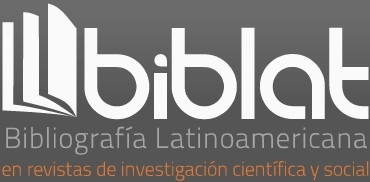Form and cultural complexity: epistemological notes for a semiotic anthropology
DOI:
https://doi.org/10.35494/topsem.2020.1.43.661Keywords:
forms, linguistics, cultural complexity, instability ecologic, semiotic anthropologyAbstract
The epistemological relations between complex and dynamic
systems and the understanding of semiotic/semiolinguistic and
anthropological complexity, properly human, have become an
indisputable necessity. The epistemological relations between
complex and dynamic systems and the understanding of semiotic/
semiolinguistic and anthropological complexity, properly
human, have become an indisputable necessity. The question
of terminological transfer and the transposition of descriptive
resources from the physical and chemical sciences to the study
of social and symbolic behavior raised doubts about the legitimacy
of the transposition itself, but also about the effectiveness
of approaches taken from the natural sciences to describe socialsymbolic
interactions and complex semiotic forms. Recently, the
ecological turning point in the cultural sciences has distanced
itself from this problem and has highlighted the importance of
a pluralist and unifying perspective in relation to the modes of
description and objectivation of the phenomena studied. In fact,
an ecological approach to a given cultural phenomenon seeks
the integration of a plurality of heterogeneous descriptions coming
from different disciplinary strategies; in so doing, such an
approach aspires to recover not so much the internal systematicity
of the phenomenon as its lines of development and change
within increasingly richer systems of organization, spheres of
existence and evolution that are always open to change, variation
and rebalancing. One might even add that ecological approaches
in the cultural sciences have explicitly addressed the idea of a
complexity of human life and its forms, mainly emphasizing the
idea of a constant and non-linear interaction with the environment
and inhabited environments. An important consequence
concerning this study on symbolic behavior is derived from
this: the epistemological questioning of the roles to be assumed
in epistemological and descriptive strategies by many concepts,
such as: form, sociality, incorporation, fluctuation, mediality
Downloads
References
and Epistemology. Chicago: University of Chicago Press.
BONDÌ, Antonino (2015). « Pour une anthropologie sémiotique et phénoménologique. Le sujet de la parole
entre cognition sociale et valeurs sémiolinguistiques ». Intellectica, vol. 1, núm. 63, pp. 125-148.
___________, PIOTROWSKI, David & VISETTI, Yves-Marie (2016). « Phénoménologie et linguistique : un entrelacs ».
Metodo, vol. 4, núm. 2, pp. 267-307.
BOURGINE, Paul & LESNE, Annick (2006). Morphogenèse. L’origine des formes. París : Belin.
CASADEI, Alberto (2018). Biologia della letteratura. Corpo, stile, storia. Milán: Il Saggiatore.
CLARK, Andy (2003). Natural-Born Cyborg. Minds, Technologies and the Future of Human Intelligence. Oxford:
Oxford University Press.
COMETA, Michele (2017). Perché le storie ci aiutano a vivere. La letteratura necessaria. Milán: Raffaello Cortina.
CONEIN, Bernard (2004). « Cognition distribuée, groupe social et technologie cognitive ». Réseaux, núm. 124,
pp. 53-79.
FAUCONNIER, Gilles & TURNER, Mark (2002). The Wat We Think. Conceptual Blending and Mind's Hidden
Complexity. Nueva York: Basic Books.
GALLESE, Vittorio (2012). « Aby Warburg and the dialogue among aesthetics, biology and phisiology ». pH, núm.
2, pp. 48-62.
GEERTZ, Clifford (1973). The interpretation of Cultures. Nueva York: Basic Books.
GEHLEN, Arnold (1988). Man. His Nature and Place in the World. Nueva York: Columbia University Press.
HODDER, Ian (2012). Entangled. An Archaeology of the Relationship between Human and Things. Chichester:
Wiley-Blackwell.
HUTCHINS, Edwin (2005). « Material anchors for conceptual blends ». Journal of Pragmatics, núm. 37, pp. 1555-
1577.
INGOLD, Tim (2000). The Perception of Environment. Essays on Livelihood, Dwelling and Skill. Londres:
Routledge.
___________ (2008) « When ANT meet SPIDER: social theory for arthropods ». En C. Knappett & L. Malafouris
(Eds.). Material Agency. Towards a Non-Anthropocentric Approach. Nueva York: Springer Science/Business
Media, pp. 209-216.
___________ (2013). Marcher avec les dragons. Bruselas : Zones Sensibles.
LAKOFF, George (1987). Women, Fire and Dangerous Things. What Categories Reveal about the Mind. Chicago:
Chicago University Press.
LANDA, Manuel de (1997). A Thousand Years of Nonlinear History. Nueva York: Zone Books.
___________ (2006). A New Philosophy of Society: Assemblage Theory and Social complexity. Londres/Nueva York:
Continuum.
LASSÈGUE, Jean (2005). « Formes symboliques et émergence de valeurs ; pour une cognition culturalisée ».
RSTI-RIA, núm. 19, pp. 45-55.
___________, ROSENTHAL, Victor & VISETTI, Yves-Marie (2009). « Économie symbolique et phylogenèse
du langage ». L’Homme, núm. 192, pp. 67-100.
LEROI-GOURHAN, André (1964). Le geste et la parole. Technique et langage. París : Albin Michel.
MALAFOURIS, Lambros (2013). How Things Shape the Mind. A Theory of Material Engagement. Cambridge,
MA.: MIT Press.
MITHEN, Steven (1996). The Prehistory of Mind. A Search for the Origins of Art, Religion and Science. Londres:
Phoenix.
NOË, Alva (2015). Strange Tools: Art and Human Nature. Nueva York: Macmillan.
REMOTTI, Francesco (2011). Cultura. Dalla complessità all’impoverimento. Roma-Bari: Laterza.
ROSENTHAL, Victor & VISETTI, Yves-Marie (2008). « Modèles et pensées de l’expression : perspectives
microgénétiques ». Intellectica, vol. 3, núm. 50, pp. 177-252.
RYAN, Marie-Laure (2010). « Narratology and cognitive science : A Problematic Relation ». Style, vol. 4, núm. 44,
pp. 469-495.
SALANSKIS, Jean-Michel (2003). Herménéutique et cognition. Villeneuve-d'Ascq : Presses Universitaires du
Septentrion.
VARELA, Francisco (2017). Le Cercle Créateur. París : Seuil.
WILDGEN, Wolfgang (2004). The Evolution of Human Language. Scenarios, Principles and Cultural Dynamics.
Ámsterdam/Filadelfia: John Benjamins.
WOERMANN, M. (2016). Bridging Complexity and Post-Structuralism: Insights and Implications. Cham:
Springer.
Downloads
Published
How to Cite
Issue
Section
License

Tópicos del Seminario is licensed under a Creative Commons Reconocimiento-NoComercial-CompartirIgual 4.0 Internacional License.














